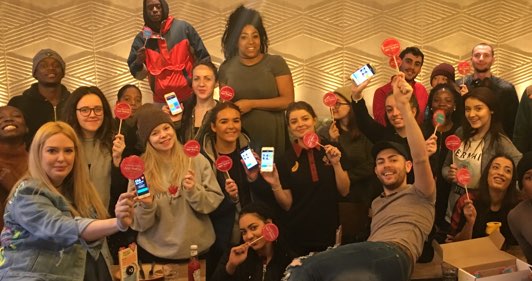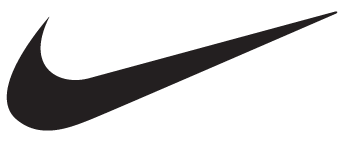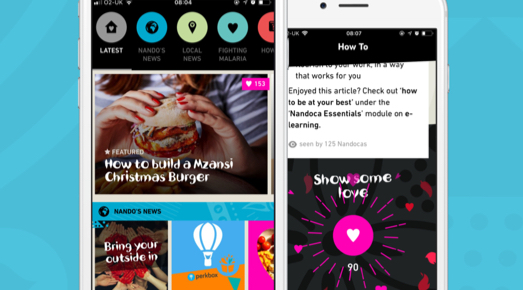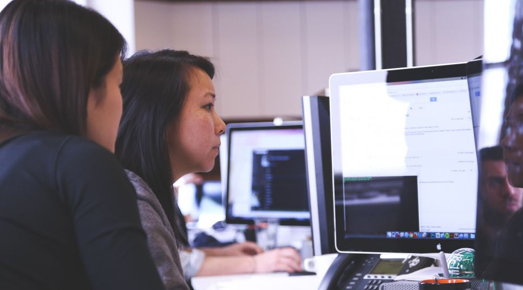Employee Experience
is Made by Many
Technology is driving seismic changes in the workplace. The ways we communicate,
collaborate and learn are being revolutionised, unlocking new possibilities to
radically improve Employee Experience (EX). However, most companies are failing
miserably to meet the rising expectations of their employees.
At Made by Many, we approach Employee Experience design in a unique way: by
involving employees in co-creating the experience itself. This delivers better
outcomes and highly engaged employees, who have a stake in the experience and
product, instead of having something foisted upon them.
Here, we’ve brought together tools and thinking to help you design an Employee
Experience that will transform your business.
How MxM Tackles Employee Experience Challenges
Engage employees as co-creators in your design process
Unchecked assumptions about employees are the source of many failed projects.
Explore your people’s needs through their eyes. Understand how they use tools
and products to manage other important aspects of their lives.
Involve them early and often in co-design sessions that build their experience,
feedback and creativity into the solution.
The rewards for this are more engaging experiences and tools, and a more engaged
workforce: people are far more invested in something they’ve played a part in designing.
There are clues in the workarounds
There is a great deal to be learnt from the way people inside your organisation
are already using technology to solve their problems.
We often observe workarounds where employees have gone rogue with WhatsApp, Facebook
Groups and Google Docs to make up for missing tools.
These are brilliant signposts to unmet needs and new opportunities to innovate your
Employee Experience.
Think of them as user-led prototypes for new solutions that you can actually manage
and control especially with respect to data and security.
Start small and discover your ‘catnip’
It’s always tempting to deliver far more functionality in the first release of a
new digital tool or experience than is necessary.
Much better to launch with ‘just enough’ to deliver meaningful value as early as
possible. This enables faster, nimbler iteration and learning.
We initially focus on the ‘catnip’: the singular feature, or relationship foundation,
that builds frequency and habit. This will allow you to learn very rapidly what to build next.
Nail it first, and then scale it
In our experience, one of the most common mistakes is to roll-out a new Employee
Experience to all corners of the organisation without first understanding if it
really meets employee needs.
Invest a bit more time upfront and validate your hypotheses about end-user value
with a smaller area of the business first e.g. one type of user or one location.
This way you can learn and adapt before scaling.
Learning after you’ve scaled is much more costly, time-consuming and demotivating than
learning before you scale.
Tomorrow’s digital products are never complete
Just like the smartphone apps we all use outside of work, the tools and experiences
we use to do our jobs also need to be continuously updated and improved over time.
If they’re not, they degrade and become less and less useful, and more and more at
odds with our constantly shifting norms and expectations.
This is the art of Product Management: learning and adapting continuously, adding
new features, removing the stuff that doesn’t work and making regular releases.
Product/market fit isn’t a fixed point, but a continually evolving equation.
The product must keep up with its users’ changing needs, the changing business
requirements, and what the technology wants.
Challenges we’re solving

Creating lasting employee happiness
 Supporting athletes beyond the pitch
Supporting athletes beyond the pitch
 Navigating best practice to accelerate business transformation
Navigating best practice to accelerate business transformation
 New tools and processes to help employees deliver better services
New tools and processes to help employees deliver better services
A short guide to the emerging workforce
From the career ladder to the career lattice
The prevailing narrative we tell our children about life is one of a linear, always progressing career. But with lengthening life expectancy, changing social norms and a world of work disrupted by technology, this narrative is no longer fit for purpose. What will careers look like in the future? We spoke with George Lee at The Age of No Retirement to find out.
Play videoEssential reading

Free workshop!
If you are trying to achieve something extraordinary with your Employee Experience or have a workforce with unique challenges and characteristics, then please get in touch. We are offering to run 10 free workshops that will create a blueprint for how to best tackle each challenge.




